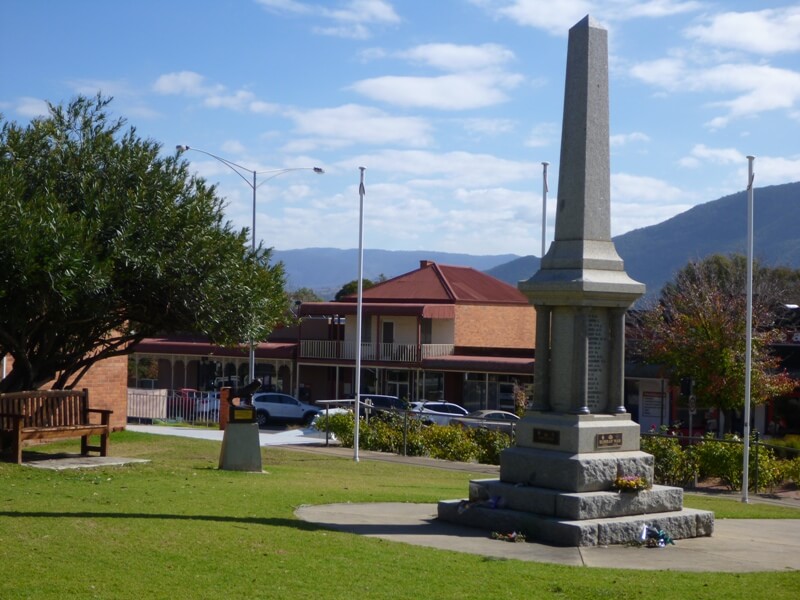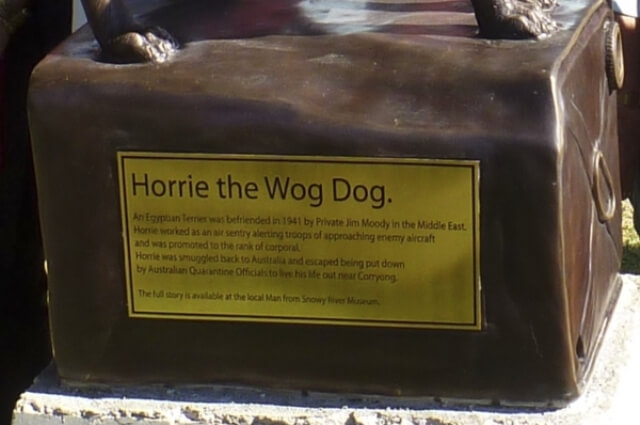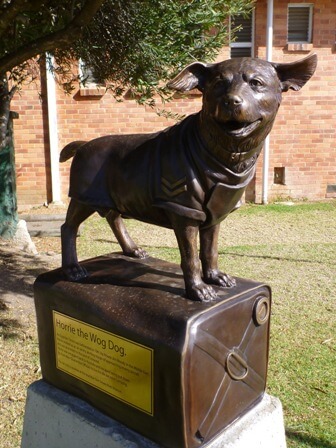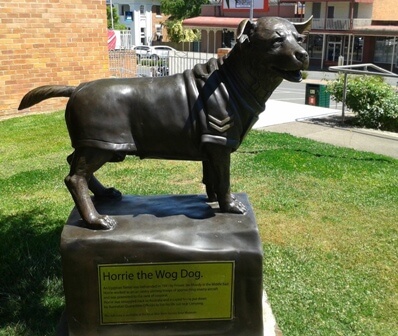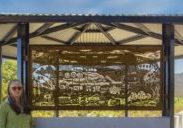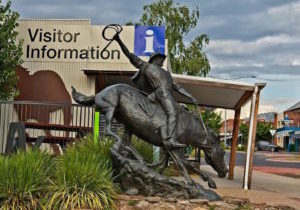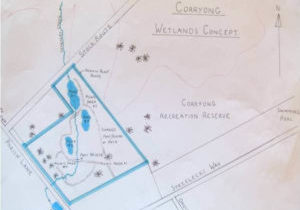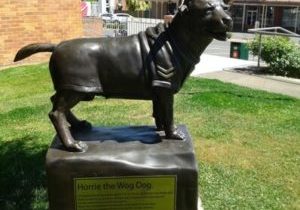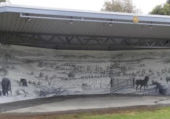Projects: Horrie
In 1941, when in Egypt, Private Jim Moody adopted Horrie, an Egyptian terrier. After this, Horrie became the unofficial mascot of Moody's 2/1st Machine Gun Battalion. Horrie then travelled thorough the Middle East with the battalion. Firstly Horrie travelled to Greece. Then he moved with the army to Crete and Palestine and later to Syria.
Horrie warned the troops of the approach of enemy aircraft. When he was in Crete, Horrie was wounded by a bomb splinter. The splinter was later removed with a knife. In Syria he was issued with a coat cut from a soldier’s dress tunic to keep him warm.
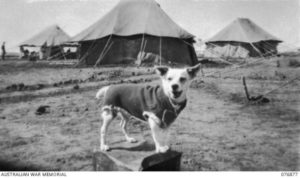
Horrie in Syria wearing his Corporal's uniform.
Moody returned to Australia in 1942. He smuggled Horrie into the country in a special travelling pack. Later, in 1945, quarantine officials found out that Horrie was in Australia. Following this, Moody was ordered to surrender the dog. Moody found a substitute dog in the pound. Then he produced this dog for the authorities. After this, the real Horrie lived a quiet and anonymous life near Corryong in the Nariel Valley.
Horrie's uniform is now on display in the Australian War Memorial. As well as this, the collection also contains the travelling pack used to smuggle Horrie into Australia.
The Man From Snowy River Tourist Association commissioned a statue to recognise and honour Horrie. The statue was unveiled on Anzac Day 2016. Horrie now stands proudly in the RSL Memorial Gardens in Corryong.
A more detailed description of Horrie's life can be found in the book "Horrie the War Dog. The story of Australia's most famous dog." by Roland Perry. This book can be purchased at the Corryong Visitor Information Centre.
Statue Inscription
" Horrie the Wog Dog.
An Egyptian Terrier was befriended in 1941 by Private Jim Moody in the Middle East.
Horrie worked as an air sentry alerting troops of approaching enemy aircraft and was promoted to the rank of corporal.
Horrie was smuggled back to Australia and escaped being put down by Australian Quarantine Officials to live his life out near Corryong.
The full story is available at the local Man from Snowy River Museum."

